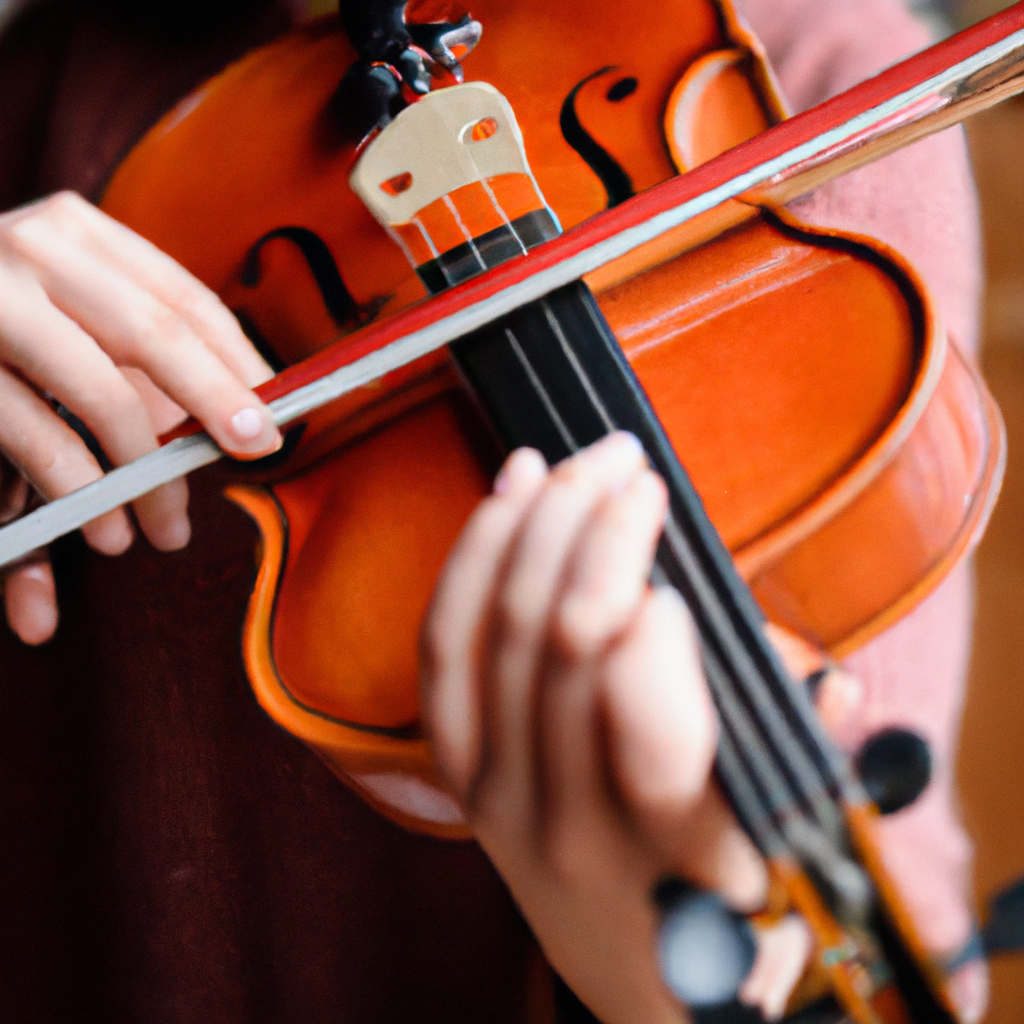
Learning to play the violin is an exciting journey that requires time, dedication, and patience. As a beginner, it's important to be aware of common mistakes that can hinder your progress and potentially discourage you from continuing. By avoiding these mistakes, you can set yourself up for success and enjoy the process of learning the violin.

One of the most common mistakes beginners make is trying to learn the violin on their own without seeking professional guidance. Having a qualified teacher can provide invaluable support and guidance throughout your violin journey. A teacher can help you develop proper technique, offer personalized feedback, and keep you motivated.

On the other hand, attempting to learn on your own can lead to various pitfalls. Without proper guidance, you may develop bad habits that are difficult to correct later on. Additionally, self-learning can be overwhelming, as you may not know where to start or how to progress effectively. Therefore, investing in a good teacher from the beginning is highly recommended.
Correct posture is crucial for playing the violin. Without it, you may experience discomfort and hinder your ability to produce a beautiful sound. It's important to practice playing with a straight back, relaxed shoulders, and a balanced posture. A qualified teacher can guide you in developing the correct posture for your body.
In addition, hand and finger positioning are key elements of proper violin technique. Beginners often make mistakes such as gripping the neck too tightly or placing their fingers too flat on the strings. These mistakes can affect intonation and hinder your progress. With proper guidance, you can develop a good foundation in hand and finger positioning and avoid these common pitfalls.
Before diving into playing a piece, it's essential to warm up your muscles and loosen your joints. Skipping warm-up exercises can increase the risk of injury and limit your playing potential. Spend a few minutes stretching your fingers, wrists, and arms, and do some simple exercises to warm up your muscles.
In addition to warm-up exercises, practicing scales regularly is beneficial for your overall violin technique. Scales help improve finger dexterity, intonation, and bow control. By incorporating scales into your practice routine, you can develop a strong foundation and enhance your playing skills.
Consistent practice is key to progress in learning the violin. Many beginners make the mistake of practicing sporadically, which slows down their progress. It's important to establish a regular practice routine and stick to it. Even if you can only spare a few minutes each day, consistent practice will yield better results than long, irregular practice sessions.
To establish a regular practice routine, set specific goals and allocate dedicated time for practice each day. Create a practice schedule that works for you and stick to it as much as possible. By making practice a priority, you'll be able to develop your skills more effectively and see progress over time.
While playing the violin is primarily a physical activity, understanding basic music theory can greatly enhance your playing. Music theory helps you understand the structure of music, read sheet music, and interpret musical cues. It also allows you to communicate with other musicians effectively.
Key concepts in music theory that are important for violinists include reading sheet music, understanding rhythm, and knowing basic music notation. By investing time in learning music theory alongside your practical violin skills, you'll have a deeper understanding of the music you're playing and be able to perform with more confidence.
Playing the violin with excessive tension can hamper your progress and lead to discomfort or injury. Tension in the shoulders, arms, and hands can negatively impact your sound quality and limit your range of motion. It's important to learn to play with a relaxed posture and release unnecessary tension.
To play with a relaxed posture, focus on breathing deeply and consciously relaxing any tense muscles. Pay attention to your body and make adjustments as needed. A qualified teacher can guide you in developing a relaxed playing posture and help you identify any areas of tension that need improvement.
When faced with a challenging piece, it's easy to feel overwhelmed and want to rush through it. However, rushing through difficult pieces can hinder your progress and lead to sloppy playing. It's important to take a step back and approach challenging pieces with patience and a strategic mindset.
Instead of trying to play the entire piece at once, break it down into smaller, manageable sections. Focus on mastering one section at a time before moving on to the next. By breaking down the piece and practicing it slowly and accurately, you'll build confidence and eventually be able to play the entire piece with ease.
Developing a good ear for pitch and intonation is crucial for violinists. Many beginners make the mistake of solely relying on sheet music and neglecting their ear training skills. By actively listening to the music you're playing and developing your ear, you'll be able to play in tune and produce a more expressive sound.
One way to improve your ear training skills is to regularly practice playing by ear. Try to play simple melodies or tunes without referring to sheet music. This will help you develop your ability to hear and reproduce pitches accurately. Additionally, listen to recordings of professional violinists and pay attention to their intonation and tone.
As a beginner, performing in front of others can be intimidating, but it's an important part of the learning process. Seeking opportunities to perform, whether it's in a recital, a community event, or even just for friends and family, can boost your confidence and help you grow as a violinist.
Performing in front of others also provides an opportunity to receive feedback and constructive criticism. Constructive feedback from a teacher, fellow musicians, or even audience members can help you identify areas for improvement and work on specific aspects of your playing. Embrace these opportunities for growth and use feedback to refine your skills.
Learning the violin as a beginner is an exciting and rewarding journey. By avoiding common mistakes such as not seeking professional guidance, neglecting proper posture and technique, skipping warm-up exercises and scales, neglecting regular practice, overlooking music theory, playing with excessive tension, rushing through difficult pieces, failing to develop ear training skills, and not seeking performance opportunities and feedback, you can set yourself up for success and enjoy the process of learning the violin. Remember to be patient, practice consistently, and seek guidance when needed, and you'll be well on your way to becoming a proficient violinist.
Click here to learn more about renting a violin to start your musical journey.